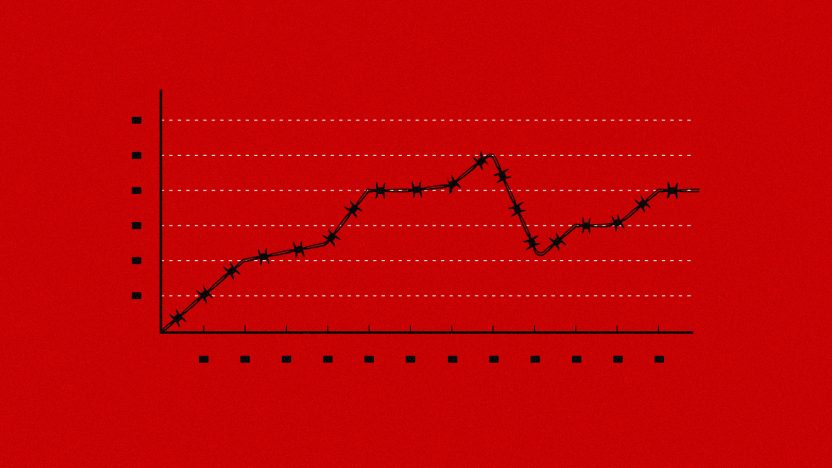Strategic decision-making in times of confusion
When owners and managers are in a hurry they tend to grab the nearest solution. Bad idea. Always try to look further, wider and deeper.
by Howard Tullman

The waves of disruptive innovation and radical changes we are facing are relentless and inescapable. In business, nobody is crazy about the somewhat overwhelming fact that they all seem to be happening at the same time, but almost everyone is excited about the new opportunities and chances to experiment and innovate that said changes carry with them.
At the moment, however, the most immediate and pressing concern for every firm’s management seems to be properly addressing the many pressing and critical decisions regarding the path forward. Complicated evaluations, strategic shifts and hard choices will be essential in order to be sure that businesses can weather the increasing complexity in the road ahead. If they are successful, the most agile and resilient firms will be around to take full advantage of the good times as they slowly begin to return. If they dither, delay or err in the restarting and rebounding process, their businesses will shortly cease to be.
The key to the entire confusing and challenging process will be for each manager to develop, implement, and adhere to a disciplined program of analysis and decision making which are all consistently aligned with a defined set of objectives. The program is based on several underlying assumptions.
First and worst is to do nothing. Nothing new. Nothing different. Just trying to get back to business as usual in a world that’s changed radically and forever won’t work. You need to forget the past — you can learn from it, but you don’t want to be a prisoner of it — because no one ever became a success in the past. You can’t plan the future by the past and too many people in times of trauma and confusion long for and look forward to the past when they need to be focused on the future.
These are the hard facts of life and they don’t change because you try to ignore them. Good business people know in their hearts that the strategy of trying to catch up with the past makes no sense, but it’s the ‘painless’ path of least persistence. At least for a little while. Soon enough, the competition will run right past you and your customers will find better, more accessible and more attractive new alternatives.
The key to the entire confusing and challenging process will be for each manager to develop, implement, and adhere to a disciplined program of analysis and decision making which are all consistently aligned with a defined set of objectives.
The truth is that any direct and immediate action is better than none even if all the moves you’re making might not be in the right direction. It’s not wrong to be wrong. It’s wrong to stay wrong. You’re much better off trying to do something and failing than you will ever be trying to do nothing and succeeding. The most often overlooked variable in decision-making is the cost of not acting. The time you lose in not deciding can never be recovered and waiting always makes things worse.
If you’re not pushing the ball forward — at whatever pace and in whatever direction makes you comfortable — you’re slowly slipping backwards. It’s just like riding a bike. As long as you’re in motion, you won’t fall over, but if you try to stand still, you’re likely to fall flat on your face. Some degree of risk taking will be an inevitable part of the decision-making process, but if you try to maximize risk reduction, you’ll consistently end up selecting alternative paths where the upside and prospect of significant profits are modest or insignificant at best.
Second, trying to build walls to hold off the future is a wanton and wasteful exercise in wishful thinking even apart from the fact that they clearly don’t work. Trying to interpose fixed barriers, painful processes and onerous restrictions, and/or other novel limitations amount to nothing more than trying to place picket fences in front of the oncoming floods. It’s a fool’s errand and doomed to fail. In times like these, agility, fluidity and flexibility (bending without breaking) are critical to survival. Walls and dams (however solid, sturdy and fixed) will be promptly and readily overrun and/or avoided just as they have been throughout history.

Third, don’t be in a hurry until you know where you’re going and what you are trying to accomplish. Speed only matters if you are heading in the right direction and, if you don’t care and make clear to your team where you want to end up, any road will take you there. The clearer the vision, the fewer the serious choices, and the quicker and smarter the decisions. Speed comes from careful alignment of actions, objectives and goals.
So, start the process by taking the time to reaffirm your values, identify and clearly communicate your near-term objectives, and firmly commit to some long-term goals. Then construct a set of required decisions — sequence them in urgency and importance — and then take them on one after another. Decisions are much easier to make when you know what your values are.
The best operators learn to attack, not ignore or avoid, their problems. They treat them as opportunities for rapid change and course corrections. And, as often as not, if they keep at it, they find a creative way to grow themselves out of their most pressing problems. I learned a long time ago that sales can solve almost any startup’s problems and cure a multitude of other sins. But, even more importantly, is having the ability to circumscribe the universe of issues and concerns and shed all of those that aren’t central to your progress and success. Eliminate the things that everyone can do. Don’t try to be all things to all people because this is a formula for mediocrity and eventual failure. Specialization, not diversification, optimizes comparative advantage.
Don’t try to be all things to all people because this is a formula for mediocrity and eventual failure. Specialization, not diversification, optimizes comparative advantage.
Make the outliers and inconsequential limitations and obstacles someone else’s problem by outsourcing commoditized work and focusing solely on those areas which can help to separate your business and opportunities from those of the competition; differentiate your products and services from the others because they are offerings which your firm and people can uniquely deliver; and offer the most attractive returns for your efforts and warrant increased focused attention and investment in the future. The question as you confront each issue should always be how and whether its resolution can help you develop sustainable competitive advantages. Every other determination flows from there.
But again, it’s absolutely critical to get started in the right way. Too many owners and managers are in a hurry and they tend to grab the nearest and/or the quickest solution. They eventually discover that for every problem, there’s always at least one solution that’s simple, neat and dead wrong. Others fall back on the same couple of approaches they’ve always used partly out of habit, partly due to laziness, and partly because this approach has worked out pretty well for them in the past. But it isn’t going to work in a future where all the rules have changed.
The fact is that, in any kind of research and decision making, a little patience, some consistent methodology, and a better and broader approach pays off consistently in the end results. You don’t have to go slow, but you’ve got to be smart about considering all your options. Yes, I know that ‘all’ is a scary word and I know all about analysis paralysis as well. I’m not suggesting that you have to wait until you’re ‘right’ or absolutely sure in order to proceed but you’ll never have all the information you need to properly decide. If you did, it wouldn’t be a decision, it would be a foregone conclusion.
You can dramatically increase your odds and improve your ultimate outcomes without materially slowing down the process if you just follow a few simple rules.

Look Further.
Too many times we’re just in a hurry and we tend to grab the option that is sitting right in front of us. It’s fast. It’s easy. It even seems reasonable, but it’s often just a make-shift solution that defers the search for a real answer and is likely to let the problem worsen in the meantime. Bad decisions may make you feel good in the short run, but they don’t move things forward. Worse yet, we fall into the “either/or” trap of thinking that we have no other way to go and that it’s the only way because we haven’t taken the time to look more broadly at the universe of alternatives. You can’t effectively evaluate or consider choices which you know nothing about.
Look Wider.
Even when we have the patience and the discipline to look beyond the quick and easy answer and start searching for a better response, we don’t really commit to the process and again we tend to grab the best next alternative and call it a day. It’s not easy to juggle several choices and it’s even harder when you’ve got various parties who insist on being part of the decision, so we are always looking to simplify and shorten the list. But the odds are pretty clear: if you only look at a single alternative, you’ll get it wrong more than half the time. If you carefully and fairly consider two or more alternatives, you’ll make the right decision more than 60% of the time. And, to be clear, without follow-on action, you won’t have truly made a real decision in any case.
Look Deeper.
Too often we get stuck dealing with the most obvious symptoms of the root problem and never dig deeply enough to get to the real cause so that it can be addressed and resolved. A common reason is that we only talk to our peers and direct reports instead of seeking input from the field and the front line. It’s never easy to say what you think no one wants to hear, but the best problem solvers I know are also the very best listeners and they make it easy for others to be heard.
Bottom line: it’s not one thing. It’s not either/or. It’s not what’s quick or handy. It’s gonna take a little time, a lot of looking, and some attentive listening. But when the dust finally settles, the way forward is clear, and the decisions are made, you’ll be on the right path, with the right plan, and far ahead of the pack.


